Having a shelter on the roof of a car has its advantages and disadvantages in every sense, and the same holds regarding windy conditions.
There are several aspects to consider like stability, noise, protection, and safety.
From a positive side, a roof top tent is firmly anchored to the car as its base, and this connection is definitely much stronger than in the case of any staked ground tent.
However, a roof top tent together with a car is a very boxy object, and it represents a huge wind obstacle. It may rock and shake so this may be unpleasant in the case of strong winds.
Stability of a roof top tent
Imagine a low profile dome style tent with a full coverage fly. Such a shelter is usually very aerodynamic and it is best suited for windy spaces.
Now compare this with a roof top tent perched on the top of a car. The top picture above shows a great example, this is a pleasant and comfortable Breezeway 72 Roof Top Tent by 23ZERO. A roof top tent is never really aerodynamic, and its base (the car) is not anchored. The whole structure is of course heavy but and this is what provides its stability.
I have slept in the car on numerous occasions and in strong winds. This is frequently on some high mountain passes, and I know well that a car can swing and sway under wind pressure. With a roof top tent on, this is even more so.
Regarding the type of the roof top tent, I would say that hard top type is probably a bit better than the soft shell type. But in some cases it may be inferior to clam shell type roof top tents.
Namely, the hard top type is completely boxy and far from aerodynamic, see the TentBox Classic roof top tent as an example in the picture below.
But when you close its awnings and windows, it has fewer elements that would be affected by the wind. The walls in this case are smooth surfaces, and the same is with the roof of course.
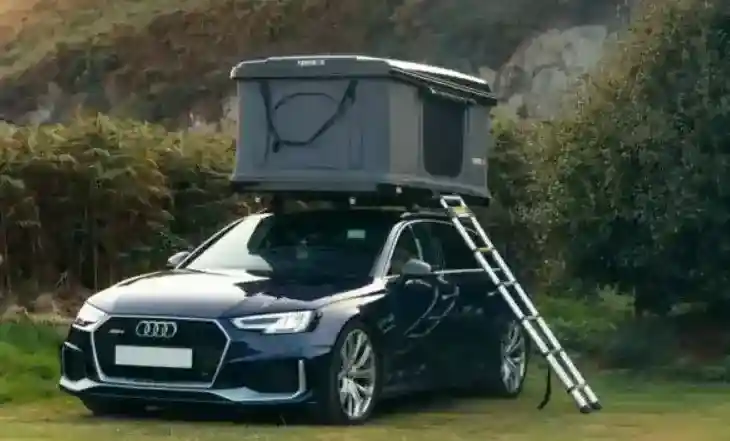
With the other two type (clamshell roof top tents and soft shell), you have more extras like a fly for example that may be damaged in strong winds.
Also, soft shell tents and some of clam shell type hard shell tents have a part that is extended and it hangs on the side of the car. The picture below shows one example of that type, the Smittybilt Overlander Tent:
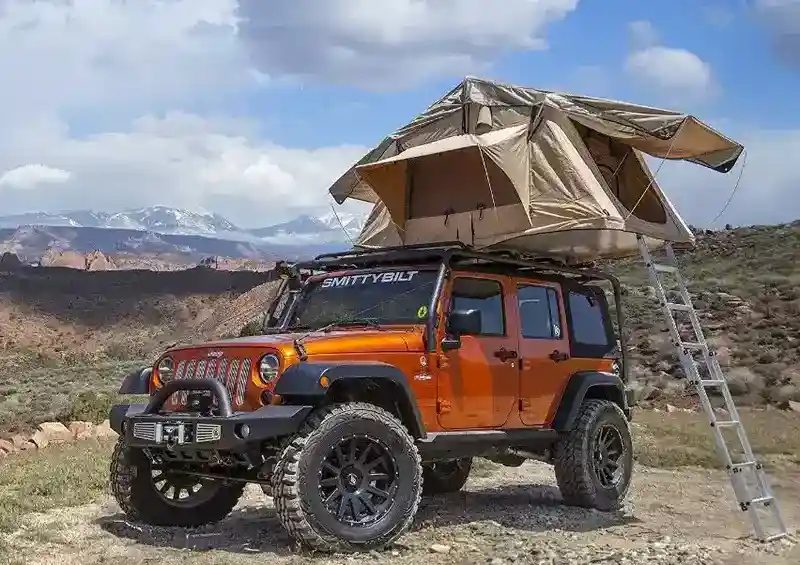
So this is a structure that is more exposed to the wind than the bottom of a hard top shelter which is above the car only, and rarely with any part that exceeds the width of the car.
But some of these tents also have an extended canopy. You can see this in the picture below that shows the Overland Vehicle Systems Nomadic 2 Extended Roof Top Tent.
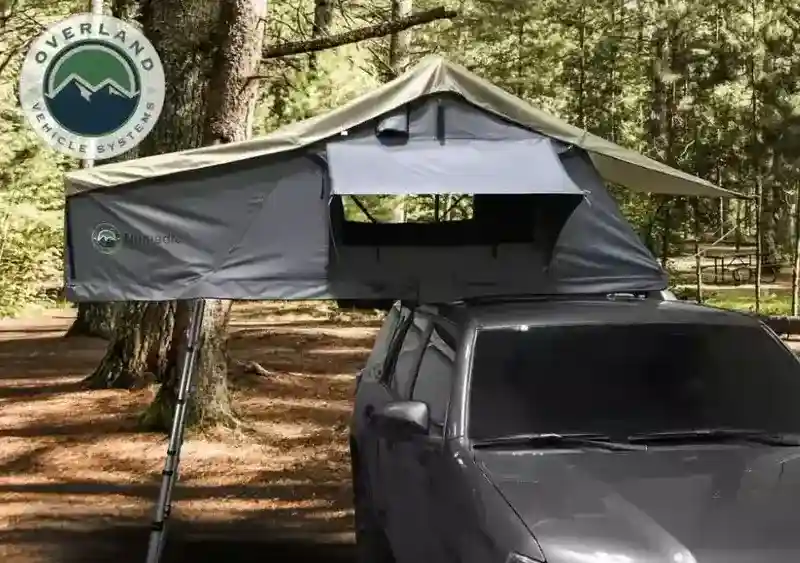
As you see, this canopy creates a dry entry point as it covers the ladder where you access the roof top tent. This is useful to have, but imagine how bad this can be in a strong wind from below.
This detail you can see even better in the following picture that shows view from below in the case of 23Zero Walkabout 87 Roof Top Tent.
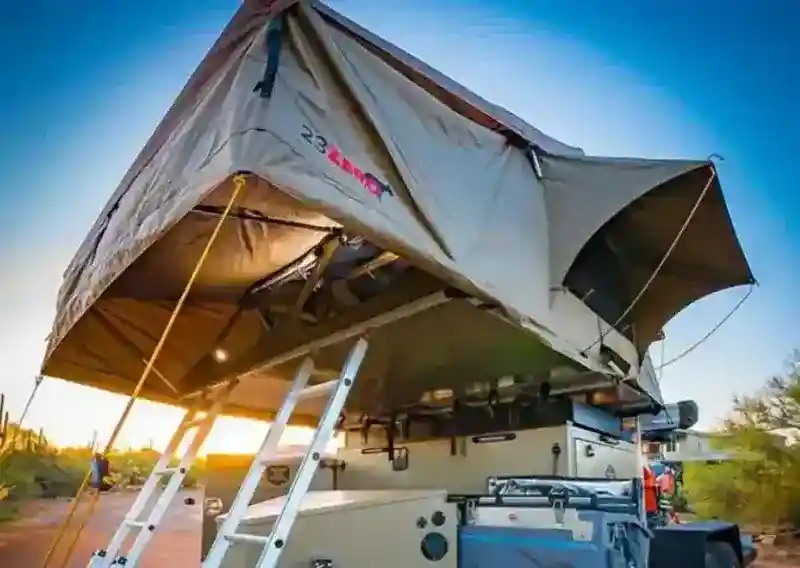
But see now this iKamper BDV (Blue Dot Voyager) Duo clam shell roof top tent in the picture below. If you are lucky to have a stable wind direction, you can orient it so that the car faces the wind and it will be more stable than any other model here.
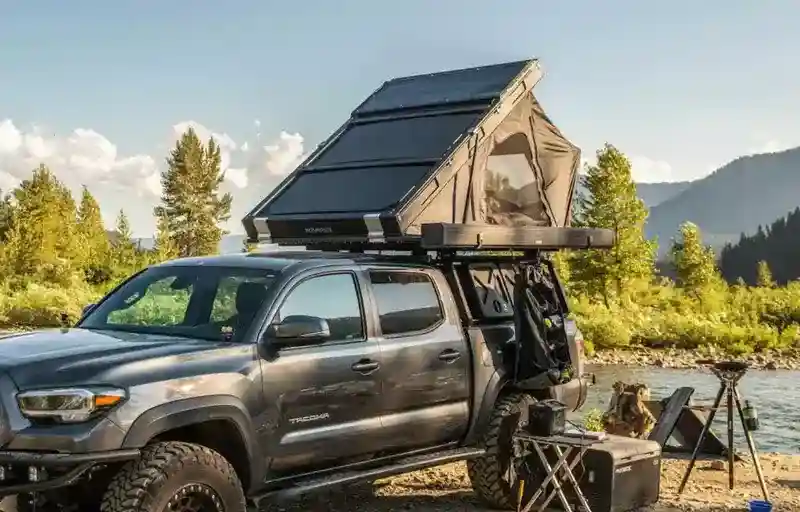
However, as mentioned above, not all models of these clam shell or wedged roof top tents are of that type. Some have an extension similar to soft shell roof top tents, and they are less stable in wind than hard top roof top tents.
Noise issues
Some of the features mentioned above play a role here as well. You will have more noise if you have an extra fly over the roof top tent.
Soft shell roof top tents will be more noisy even without fly as compared with the hard top roof top tents. This is simply because you have more flapping fabric around.
About noise issue you can here a bit also in this video presenting Crua AER roof top tent, please have a look in the video below. Note that this brand has an thick cocoon that you can add inside and insulate the roof top tent.
How do I stop my roof top tent from flapping in the wind?
You realize from the text above that some types of roof top tents may be better than the other. Other than that, close your awnings, and zip up window flaps. There is not much you can do about this.
But there are also roof top tents that are constructed from heavier materials. More precisely, there are three-layer constructions, so they are far more stable in the wind, and with such a three-layer barrier you also have a reduced noise.
Protection and safety in windy conditions
With a hard top roof top tent, you have a solid roof, only the walls are fabric. So you have less potential areas for damage caused by wind, for leaking, and for noise mentioned above. I think this should be obvious from the pictures above.
If you know that there will be some severe storm with strong winds, you might consider closing your roof top tent completely before the storm starts, and stay in the car until it is over.
As you know, many of them, in particular hard shell roof top tents, and designed so that all your bedding and the mattress remain inside. So closing it all in the case of a storm is not complicated.
Doing this during the storm may be difficult and risky, this in particular with soft shell type and clam shell roof top tents. It is best not to try to do this during the storm.
But there are also versatile designs where you can unclip the tent and use it on the ground. The previously mentioned Crua AER and Crua AER Maxx are of that type. This is something to consider if you feel safer on the ground in storm situations.
Conclusion
All in all, there is no doubt that roof top tents of any kind can take a lot in stormy conditions. But none of them is really aerodynamic, and they are not the best shelters for very windy situations. This holds in particular for inflatable roof top tents.
However, I do not think that this should be your main concern if you have to choose one or another, the differences are not really so crucial.
It is more important to check if such a shelter offers a good ventilation. This because in the case of storm, you will have to close all those beautiful windows, and zip up awnings and flaps. So you will want to have vents in such situations to reduce condensation inside.
Yet another feature that is more important than the issue of shape and windy conditions is versatility. This means that the shelter should be able to protect you in all seasons.
For this, you can go for a roof top tent that has an accessory inner insulation that can be placed inside when you need it. Or you can choose a roof top tent with three layers of fabric. There are such examples on the market.
Thank you for reading. Let me know if you have questions or comments, there is a comment box below. You might want to read also my text about using roof top tents for family camping.
Bookmark this site and keep as a reference, you will always have new and interesting texts about outdoors added here. Have a nice day.
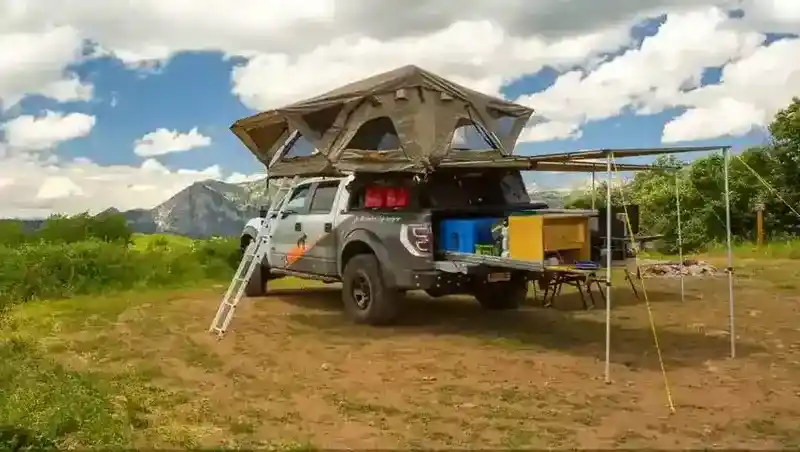
 Hi, I am Jovo, the founder of this Off-Ground Tents site and several other outdoor sites. I have been mountaineering for almost 40 years already, and I have created this site to use as a reference for various types of above ground tents.
Hi, I am Jovo, the founder of this Off-Ground Tents site and several other outdoor sites. I have been mountaineering for almost 40 years already, and I have created this site to use as a reference for various types of above ground tents.